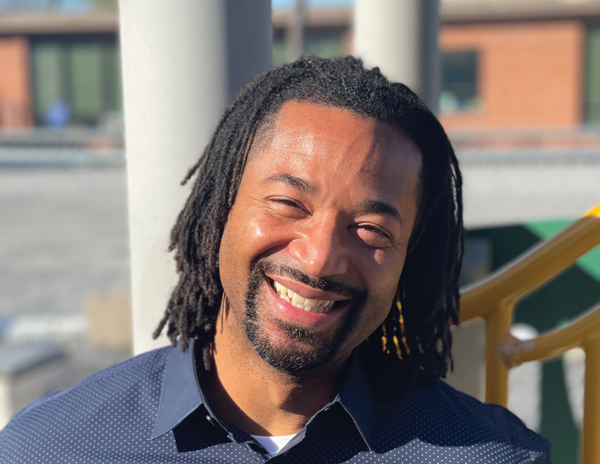When Larry Lewis, executive director of Growing Futures Early Education Center, gives examples of the types of children the organization assists, he calls them all “Little Larry.” It’s clear that the work is personal for him. His dedication to his job and his care for his community is embedded in his tone of voice. Lewis has been working passionately for more than two decades with kids and knows intimately the struggles so many of them are experiencing. When Lewis talks about growing up in poverty, he reflects on the older teenagers who helped keep him from making bad choices as well as the football coaches who were influential in making sure he stayed on the right path. And now he brings all of this history, these personal connections, to his work at Growing Futures.
In 2023, Growing Futures had an incredible kindergarten-ready rate of 93%. “School readiness is the ultimate goal for us,” Lewis shares.
The work Lewis and his team at Growing Futures are doing is clearly something exceptional. But instead of merely celebrating that success, Lewis is also focused on the 7% of students who didn’t quite hit the mark. “It’s important that we don’t drop that baton for anyone,” he says.
“The 7% of kids that weren’t K-ready all went to their first day of school with the information we’ve learned about them, so we could say right from the start ‘here are the areas and challenges that Little Larry has. Here’s his IEP.’ To be able to start with the school system being fully aware at day one that there is something extra going on, it can change Little Larry’s whole educational future.”
Twice a year, Growing Futures offers every child within their program onsite vision screenings, dental screenings, and hearing screenings, as well as other services like speech therapy, play therapy, occupational therapy and more. Their Wrap Around Care Program is where Growing Futures can often find the issues that might make being school-ready more challenging. This is another personal issue for Lewis.
“My brother was 16 when we finally found out that he couldn’t see and was colorblind,” he shares. “In kindergarten his whole educational experience was so confusing because red was yellow and yellow was red, and he was getting bad marks. He started to hate going to school. And this whole horrible experience could have been avoided if he would’ve had access to care from age zero to five to get vision screenings. But instead, he was in fifth grade when teachers started asking questions and by that time he’d already been labeled as bad. I think about how different things could have been for my brother if he had walked in on day one with his little backpack, lunch pal, and glasses. What if the teachers had helped him through the challenges instead of judging him?”
Since 1965, when Growing Futures began as a Head Start program for 17 preschool-aged children from low-income families, they have continued to grow and currently provide quality early education opportunities and family support services to 223 children living in Johnson County, Kansas. All of their families live at or below the federal poverty threshold, some of the children are in foster care, or many are on the verge of or experiencing homelessness.
“We are providing families that normally would not have the means, the resources, the access with a high-quality educational experience,” Lewis explains. “There is no one in this community that does this work better than we do. What we provide allows them to be empowered.” Enrolled families also have access to a variety of comprehensive support services, including health and nutrition services, parent education, mental health, family support, social services, and engagement opportunities.
Their family support advocates can assist in everything from helping families complete their kindergarten enrollment forms, to making sure children have the correct size car seats. It’s easy to see why they have a consistent waitlist of over 200 children.
“My vision for the future of Growing Futures can frighten some people,” Lewis says when asked how he sees the organization expanding in the next five to ten years.
“I have a BIG vison. I want every child, whether they’re in poverty or not, to have this level of engagement. They all deserve it. I would like to take this blueprint, which we’ve proven is successful, and spread it across our metro area. There are more than 4,000 children that could benefit from our services, so that should be the goal. I want to serve the full need.”
As the program grows and continues to adapt to the needs of its community, one thing will likely remain the same—the experience of helping each child, all 4,000 of them, will be personal. It’ll be personal for Larry Lewis too.

